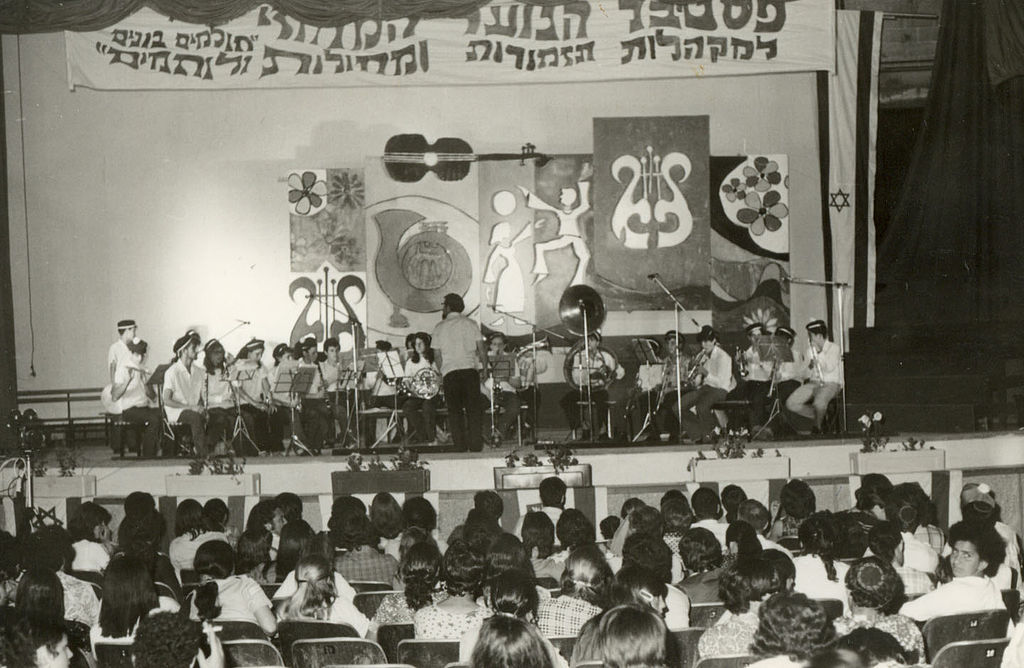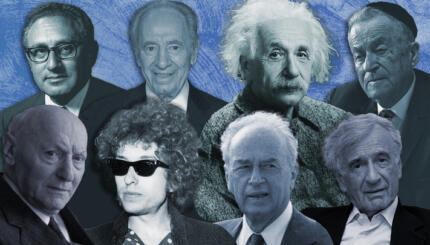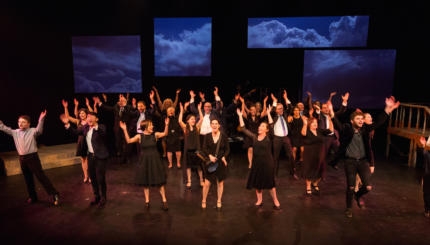Throughout world history, music has served political purposes. Plato’s Republic describes the ability of music to calm the passions, thereby allowing for the building of a harmonious society. In 17th-century France, Louis XIV commissioned new large-scale musical works for every social occasion or political event; the grandeur of those musical works was to reflect the grandeur of the monarch himself. American revolutionaries adopted songs that spoke of freedom and national pride to unify them in their quest for independence from Britain.
Fostering a Love of Israel
Music played an equally important role in the spread of Zionism in the late-19th and early-20th centuries. The Zionist movement from its beginnings posited that the Jewish people had a common attachment to the ancient land of Israel, beginning with Abraham’s departure from his father’s home in Mesopotamia, and lasting to the present day, even after thousands of years of exile and dispersion. But the actualization of such a profound common love of the land required creativity and work. The pressing question for the early Zionists was how to bring the Jewish people together, to rekindle their love of their common heritage and especially of Israel.
Music is in many societies an expression of common experiences and values. Participants in the early Zionist movement reversed this process: they created, almost instantaneously, a “folk” music, in order to unify Jews throughout the world around their cause.
The early Zionists were by and large Socialists, and their approach to music reflected their politics. Music, like almost everything else in life, needed to be dedicated to and related directly to the common good. It needed to serve as an inspiration for the new olim (immigrants to Israel), both in its topics and in its musical characteristics. The topics of Israeli folk songs are as disparate as love (for example, in “Erev Shel Shoshanim”–“Evening of Lilies”) and the physical construction of the new state (as in “Havu Livenim“–Carry the Bricks). But the unifying characteristic of these songs is their description of the experience of living in Israel and fulfilling the national destiny.
With your help, My Jewish Learning can provide endless opportunities for learning, connection and discovery.
During this time, music created in the Land of Israel was for the express purposes of identity-building and furthering the goals of Zionism. (It was not until the era of World War II that large numbers of classically-trained composers began to arrive in the Land of Israel, allowing for the growth of “art music” there.)
From Biblical Text to Popular Song
From early in the 10th century, there were songs composed not only to texts descriptive of life in the Land of Israel, but also to texts from the Bible. This is not to say that many of the early olim were religious; indeed, many saw life in the Holy Land as a substitute for religious practice. But the use of biblical texts for popular songs emphasized the common experiences of the Jewish people throughout history, their common “folklore.”
Indeed, as early as 1862, the composer Eliakim Zunser published collections of songs, intended to concretize the culture being left behind in Europe.
Jews had always created music in the Diaspora, but each community had its own musical style, often influenced by its host society. Jewish musicians in British -ruled Palestine and in the early State of Israel developed a distinctive musical style, drawing heavily on European tonality, but coloring it with “eastern” or “exotic” sounds.
With the first wave of immigrants to the Land of Israel in the 1880s came the musical traditions of Europe. In fact, many of the earliest songs simply reused melodies familiar from the old country, but applied to them new words that reflected the nature of life in pre-state Israel.
But the traditions of Europe were not enough; the early olim wanted to develop their own national voice, one that reflected their reality. They thus quickly began to develop their own musical style, one that embodied the “exotic” nature of their quest. They therefore sought out and employed sounds of the music of their middle-eastern Arab neighbors to give their new music an authentic Middle Eastern flavor; many songs from this early period imitate closely folk songs already circulating among Arab populations of the area. Composers of the new musical style also eagerly applied their new sounds to the verses of such important poets as Chayim Nachman Bialik.
Exploring New Subjects
After the War of Independence in 1948, the topics of Israeli folk songs began to change. Rather than describing the pastoral scenes or the construction of the Land of Israel, they began to reflect the political reality of the new state. Songs were composed memorializing fallen friends and describing warfare, the defense of Jewish villages against their enemies, and the perpetual desire of the Jewish people for peace.
With the establishment of the State of Israel came an enormous influx of new olim from more heterogeneous backgrounds. The folk music of the country reflected this new variety, and a many distinct musical styles and trends were crystallized among Israeli composers. In 1960, the first Israel Song Festival took place to celebrate the rich musical tradition that had emerged in such a short time, and as a means of sharing the diverse musical flavors of the country.
Israeli folk music, along with its companion folk dance, spread throughout the country and the world quickly, and the invention first of radio and then of television made this process even faster. Especially in the 1960s, the use of radio allowed for the formation and popularization of musical groups like “HaTarnegolim” (The Roosters) and “Batzal Yarok” (“Spring Onions”). Naomi Shemer’s compositions and her voice came to represent the spirit of the young country, and the radio spread the sound of her songs across Israel, America, and beyond.
Television was first used in Israel in the late 1960s, and with it came increased musical programming, as well as the spread of musical theater. Today, much of Israeli popular music retains a folk-like element, both in the topics of the songs and in musical style.
The folk music created in Israel in the past century has taken on significance not only for that tiny country, but also for Jews across the world who look to Israel for cultural and religious inspiration. Israeli folk music old and new, true to its original creative impetus, allows for the unification and common identification of Jews throughout the world.



